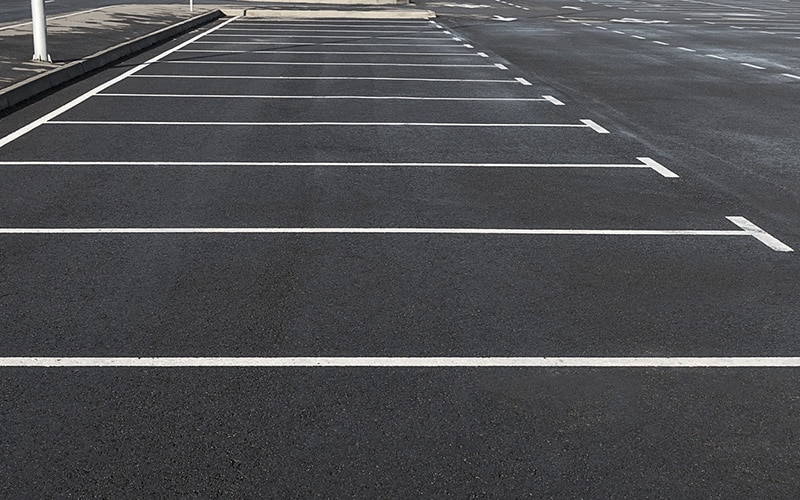Elevate Safety and Appeal: Angled Parking Lot Solutions with Asphalt Sealing
Elevate Safety and Appeal: Angled Parking Lot Solutions with Asphalt Sealing
Blog Article
Hot Mix Asphalt: A Sustainable Service for Pavement
Warm Mix Asphalt (HMA) has actually arised as a leading lasting option for sidewalk services, providing a myriad of ingenious technologies and environmental benefits. Its capability to lower and reuse products energy consumption offers a compelling instance for its fostering in roadway building and construction tasks. The lasting performance and longevity of HMA make it a preferred alternative for framework growth. As the need for environmentally friendly building techniques grows, checking out the nuances of HMA's sustainability can offer valuable insights into the future of sidewalk options.
Ecological Benefits of Hot Mix Asphalt

Furthermore, Warm Mix Asphalt assists to alleviate city heat island results. Its dark shade takes in sunshine, minimizing the amount of warm mirrored back into the ambience compared to lighter-colored sidewalks. This can decrease ambient temperatures in urban locations, reducing the need for air conditioning and inevitably reducing energy intake.
On top of that, Hot Mix Asphalt adds to improved stormwater management. Its porous nature allows water to infiltrate the sidewalk and charge groundwater supplies, minimizing drainage and the threat of flooding. These environmental advantages make Hot Mix Asphalt a lasting choice for leading roadways and freeways.
Power Performance in HMA Production
Is energy performance a critical element in the manufacturing of Hot Mix Asphalt (HMA)? Energy plays a significant duty in the manufacturing of HMA, influencing both expense and ecological sustainability. One vital facet of power performance in HMA manufacturing is the use of cozy mix asphalt (WMA) innovations.
Furthermore, advancements in plant modern technologies have brought about even more energy-efficient HMA production procedures. Modern plants are developed with attributes like recycled asphalt sidewalk (RAP) handling abilities, effective heater systems, and boosted insulation, all contributing to energy cost savings. By maximizing power use in HMA production, the sector can decrease its carbon impact while maintaining premium sidewalk products. Power effectiveness is, for that reason, an important factor to consider in making certain the sustainability of Warm Mix Asphalt production.
Recyclability of Warm Mix Asphalt
The recyclability of Hot Mix Asphalt (HMA) is a pivotal element of its sustainability and lasting environmental influence. HMA is one of the most recycled materials in the United States, with over 100 million tons of recovered asphalt sidewalk (RAP) being recycled every year in new pavement building. Reusing HMA provides several environmental benefits, such as decreasing the need for virgin materials, decreasing energy usage throughout production, and reducing the amount of waste sent out to garbage dumps.
The procedure of reusing HMA involves milling the existing visit homepage pavement, crushing it right into smaller items, and blending it with brand-new aggregate and asphalt click for more info binder to develop a recycled mix. This recycled mix can typically execute along with or perhaps far better than conventional HMA, while needing fewer resources and creating reduced greenhouse gas discharges. By incorporating RAP into new sidewalk tasks, road agencies can preserve all-natural resources, lower costs, and decrease the ecological footprint of roadway construction and upkeep activities. In general, the recyclability of HMA plays a considerable role in promoting lasting practices within the pavement industry.

Long-Term Efficiency of HMA
Asphalt sidewalks show sturdiness and resilience over an extensive period, reflecting the long-term efficiency of Hot Mix Asphalt (HMA) Furthermore, advancements in HMA innovation, such as the usage of polymer-modified binders and warm mix asphalt, have actually better improved the durability and durability of HMA sidewalks. By focusing on high quality building and browse this site construction and maintenance techniques, HMA continues to show itself as a economical and sustainable remedy for durable pavement framework.

HMA: Toughness and Sustainability
Demonstrating both durability and sustainability, Warm Mix Asphalt (HMA) has actually come to be a foundation in the construction of resilient sidewalk frameworks - regrading. HMA's resilience originates from its ability to endure hefty tons, rough weather, and high web traffic volumes, making it a dependable selection for streets, freeways, and airport paths. The make-up of HMA, which generally consists of aggregates, binder, and filler, plays a vital role in improving its longevity and resistance to wear and tear
Moreover, HMA's sustainability hinges on its recyclability and energy-efficient manufacturing process. The ability to reuse reclaimed asphalt sidewalk (RAP) in new HMA combinations minimizes the need for virgin products and decreases the environmental effect of sidewalk building and construction and maintenance. Additionally, the energy efficiency of generating HMA depends on its lower mixing temperatures compared to other pavement materials, causing lowered power consumption and greenhouse gas emissions.
Final Thought
In conclusion, hot mix asphalt (HMA) offers a lasting remedy for pavement with its eco-friendly features. HMA's recyclability, energy performance in manufacturing, and lasting durability make it an environment-friendly option for road building and construction. By saving all-natural sources, lowering waste, and decreasing greenhouse gas discharges, HMA plays a vital duty in promoting sustainability in framework development. Its ability to mitigate urban warmth island impacts even more highlights its relevance in developing eco mindful and durable sidewalk systems.
HMA is one of the most recycled materials in the United States, with over 100 million tons of recovered asphalt pavement (RAP) being recycled yearly in brand-new sidewalk construction.The procedure of recycling HMA involves grating the existing sidewalk, squashing it into smaller items, and mixing it with brand-new aggregate and asphalt binder to produce a recycled mix.Asphalt sidewalks show longevity and resilience over a prolonged duration, mirroring the long-lasting efficiency of Warm Mix Asphalt (HMA) Furthermore, improvements in HMA technology, such as the usage of polymer-modified binders and warm mix asphalt, have actually even more boosted the resilience and long life of HMA pavements. The capacity to recycle recovered asphalt pavement (RAP) in brand-new HMA mixes lowers the need for virgin products and reduces the ecological effect of sidewalk construction and maintenance.
Report this page